‘Ouija: Origin of Evil’ conjures up some scares
Directed by: Mike Flanagan
Written by: Mike Flanagan and Jeff Howard
Starring: Elizabeth Reaser, Lulu Wilson, Annalise Basso, and Henry Thomas
“Ouija: Origin of Evil” – One might find and purchase an ordinary-looking Ouija board at a toy store, but this particular item has the strangest rules:
1. Never play alone
2. Never play in a graveyard
3. Always say, “Goodbye”
I am probably not breaking the “rules”, when I divulge that at least one person in “Ouija: Origin of Evil” fails to follow one or more of the aforementioned rules. It is a horror movie, right? That is to be expected. Well, after watching this film – written and directed by Mike Flanagan - I absolutely expect that I will never purchase a Ouija board, let alone break any of its rules.
Flanagan sets this disturbing story almost 50 years into the past - 1967 Los Angeles - and introduces us to the small business of Madame Zander - Fortune Teller, housed in a two-story Victorian home which reminded me of the locale from the 2016 horror film, “Lights Out”. Although the home has ample square footage that would cause an eager real estate agent to salivate, the creepiness factor can make a semi-fragile moviegoer sweat.
Alice Zander (Elizabeth Reaser) is sweating these days as well. This likeable, 40-something widow is raising her two girls, Lina (Annalise Basso) and Doris (Lulu Wilson), and having serious trouble making financial ends meet. Quite frankly, she is not a very good fortune teller. One day, however, she discovers a Ouija board and adds it to her repertoire. Her youngest daughter, Doris, takes to the new prop like a fish to water. Doris seems to be communicating with the dead, and we all know that peace in this house will go south in a hurry.
With a runtime of one hour and 39 minutes, the story does not waste too much time, as mayhem ensues after some established pleasantries with Alice’s family. This is a nice family, but they are under duress. Lina, a high school sophomore, pushes her mom’s boundaries and Doris, about eight years old, struggles to make friends, and the girls’ issues place additional pressure on Alice. In turn, their collective stressors help attract negative energy from beyond. These undercurrents effectively garner additional sympathy for the family, as malevolent forces begin to invade their home.
These forces make all three Zanders suffer, but Doris, a sweet, blue-eyed, blonde-haired kid, takes the massive brunt of it, not unlike Carol Anne from “Poltergeist” (1982). In this case, Doris is not trapped inside of a television set, but Flanagan must have noted the parallels between the two films. As a type of homage, Doris watches plenty of TV, while she is clearly not herself, after days of working the Ouija board.
The overall story arc follows a predictable pattern: the discovery of the board, the supernatural problems that it causes and the hopeful shutdown of its black magic. Along the way, we see familiar supernatural snares from other recent horror films, like “Insidious” (2010) and “The Conjuring” (2013), but this movie successfully conjures up tension too. A sense of claustrophobia forms as most of the scares occur within the house, and Flanagan adds a grandfather clock in the living room that constantly ticks and tocks in the background.
The picture is visually troubling as well, including the revealing findings that Doris sees by gazing through the planchette’s window and slowly panning across the parlor and living rooms.
The movie does take a sudden and ambitious left turn in its third act which greatly expands the story but does so with mixed results. Shutting down the board’s black magic becomes much more challenging for Alice and the girls, and the additional difficulty feels like they face unnecessary and impossible odds. Conversely, the increased scope does not seem terribly inconsistent with the basic narrative and gives the film an added dimension.
Speaking of dimensions, Flanagan’s movie asks us to take a couple leaps of faith, such as Lina’s ability to recognize the Polish language. I know that French, Spanish and German were offered at my high school, but I do not believe Polish is a common fourth option with many typical curriculums. Also, Father Tom (Henry Thomas) – the head of Doris and Lina’s catholic school – apparently has no other responsibilities other than to address their issues and make house calls for Alice, and his constant presence becomes eye rolling after a while.
“Ouija: Origin of Evil” is an effective, but not necessarily terrific, horror film. With its familiar style, it feels like it blends together with several recent movies rather than particularly standing out. On the other hand, its B-movie 1960s vibe, creepy visuals and effective uses of sound help answer the call for the average horror movie fan.
If someone calls me to play Ouija, I’ll counter with a less stressful activity, like skydiving.
(2.5/4 stars)
Jeff – a member of the Phoenix Critics Circle – has penned film reviews since 2008 and graduated from ASU’s Walter Cronkite School of Journalism. Follow Jeff and the Phoenix Film Festival on Twitter @MitchFilmCritic and @PhoenixFilmFest, respectively.











 The Magnificent Seven
The Magnificent Seven
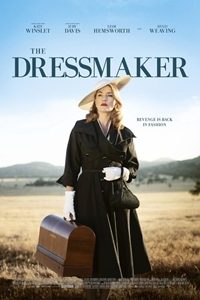 ‘The Dressmaker’ needs some alterations
‘The Dressmaker’ needs some alterations
 ‘Storks’ delivers a fun animated experience
‘Storks’ delivers a fun animated experience
 Oliver Stone’s ‘Snowden’ is a valuable ‘Citizenfour’ companion piece
Oliver Stone’s ‘Snowden’ is a valuable ‘Citizenfour’ companion piece
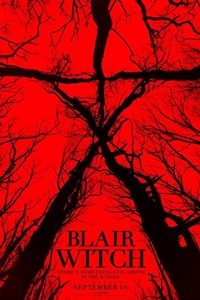 Blair Witch
Blair Witch
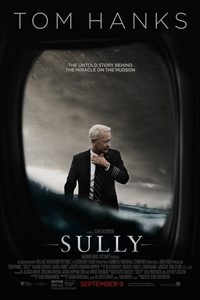 Hollywood legend Clint Eastwood’s 35th directorial effort, “Sully” (3/4 stars), arrives in theatres on Friday, Sept. 9 with Tom Hanks in the title role. The film chronicles U.S. Airways pilot Chesley ‘Sully’ Sullenberger’s heroic landing on the Hudson River in January 2009. With another solid Eastwood film in theatres, this seems like a perfect time reflect upon his work. Although I would love to compile a Top 20, 17 or 15 list, my pragmatic nature and movie critic tendencies “require” me to somehow limit the number of movies to 10, so here are my Top 10 films directed by Clint Eastwood.
Hollywood legend Clint Eastwood’s 35th directorial effort, “Sully” (3/4 stars), arrives in theatres on Friday, Sept. 9 with Tom Hanks in the title role. The film chronicles U.S. Airways pilot Chesley ‘Sully’ Sullenberger’s heroic landing on the Hudson River in January 2009. With another solid Eastwood film in theatres, this seems like a perfect time reflect upon his work. Although I would love to compile a Top 20, 17 or 15 list, my pragmatic nature and movie critic tendencies “require” me to somehow limit the number of movies to 10, so here are my Top 10 films directed by Clint Eastwood. some Union fighters burn his house and kill his wife and son. With nothing to live for, he joins a group of Confederates, and soon after, he finds himself on his own and an outlaw. In a film that truly showcases everything about the American Western, Wales covers a winding story from Missouri to Texas and partners with – at various times – a teenager, two Native Americans and a family from Kansas. Eastwood mixes good fun with plenty of gunfights, as Wales offers a barrel full of memorable lines, countless visuals of his chewing tobacco spit, dead bodies in his wake, and - possibly - a reason to live.
some Union fighters burn his house and kill his wife and son. With nothing to live for, he joins a group of Confederates, and soon after, he finds himself on his own and an outlaw. In a film that truly showcases everything about the American Western, Wales covers a winding story from Missouri to Texas and partners with – at various times – a teenager, two Native Americans and a family from Kansas. Eastwood mixes good fun with plenty of gunfights, as Wales offers a barrel full of memorable lines, countless visuals of his chewing tobacco spit, dead bodies in his wake, and - possibly - a reason to live.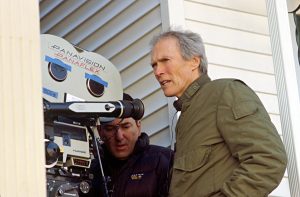 convict from a Huntsville, Texas prison. On the morning after Halloween in 1963, Butch (Costner) and another con kidnap an 8-year-old boy named Phillip (T.J. Lowther). After Butch dumps his partner, the two drive across the state with Texas Ranger Red Garnett (Eastwood) on their tail. The movie volleys between Red and Butch, and it soon concocts a semi-case of Stockholm syndrome for Phillip and the audience. Butch treats Phillip with esteem and kindness, so Costner does not wind up playing a complete bad guy, but Red is an empathetic figure as well. With an occasional protagonist and a fulltime protagonist on opposite sides of the law, “A Perfect World” reminds us that we do not live in one.
convict from a Huntsville, Texas prison. On the morning after Halloween in 1963, Butch (Costner) and another con kidnap an 8-year-old boy named Phillip (T.J. Lowther). After Butch dumps his partner, the two drive across the state with Texas Ranger Red Garnett (Eastwood) on their tail. The movie volleys between Red and Butch, and it soon concocts a semi-case of Stockholm syndrome for Phillip and the audience. Butch treats Phillip with esteem and kindness, so Costner does not wind up playing a complete bad guy, but Red is an empathetic figure as well. With an occasional protagonist and a fulltime protagonist on opposite sides of the law, “A Perfect World” reminds us that we do not live in one.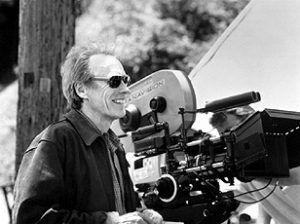 – Sean Penn and Tim Robbins won Oscars for Best Actor and Best Supporting Actor, respectively, in Eastwood’s dark crime tale filled with massive Shakespearean themes, when three childhood friends’ (Penn, Robbins and Kevin Bacon) lives intersect as adults under brutal circumstances. In chilly Boston, a coed is found dead, and the three previously-mentioned men approach the incident from very different perspectives, while the tightly-wound and complicated murder investigation pushes forward. An all-star cast – including, Laurence Fishburne, Marcia Gay Harden and Laura Linney – complete a mesmerizing experience which brings constant thoughts friendships, loyalties and how the sins of the past impact the present. The film’s most memorable line – “The last time I saw Dave” - will haunt you for years.
– Sean Penn and Tim Robbins won Oscars for Best Actor and Best Supporting Actor, respectively, in Eastwood’s dark crime tale filled with massive Shakespearean themes, when three childhood friends’ (Penn, Robbins and Kevin Bacon) lives intersect as adults under brutal circumstances. In chilly Boston, a coed is found dead, and the three previously-mentioned men approach the incident from very different perspectives, while the tightly-wound and complicated murder investigation pushes forward. An all-star cast – including, Laurence Fishburne, Marcia Gay Harden and Laura Linney – complete a mesmerizing experience which brings constant thoughts friendships, loyalties and how the sins of the past impact the present. The film’s most memorable line – “The last time I saw Dave” - will haunt you for years. Best Director, Best Supporting Actor for Gene Hackman, and Best Film Editing and proved – along with “Dances with Wolves” (1990) – that the genre can win the Academy’s top prize. Eastwood delivers a prized role as well as William Munny, an aging cowboy who takes one last bounty hunter job after years of living a clean life. Munny frequently speaks of his violent past, but the audience presently sees a cordial and respectful man, so any previous sinister dealings seem either deeply buried or simply exaggerated. In the movie’s final act, however, Sheriff Little Bill Daggett (Hackman) tests Munny’s patience with potentially explosive consequences. Most everything in the town of Big Whiskey, Wyo. (actually filmed in Alberta, Canada) feels bleak and cold, and the tones match Munny’s job of attempting to kill two cowboys for a group of prostitutes. In this world, no one is completely innocent, and Munny mentions to one of his partners in passing, “We all have it coming, Kid.” Not only does Little Bill have it coming, but so does the Kid, the targeted cowboys, Munny’s other partner named Ned (Morgan Freeman), and Munny himself. Munny’s past sins – unfortunately – are just skin-deep, and even though his wife forgave his past misdeeds, to him, they remain unforgiven.
Best Director, Best Supporting Actor for Gene Hackman, and Best Film Editing and proved – along with “Dances with Wolves” (1990) – that the genre can win the Academy’s top prize. Eastwood delivers a prized role as well as William Munny, an aging cowboy who takes one last bounty hunter job after years of living a clean life. Munny frequently speaks of his violent past, but the audience presently sees a cordial and respectful man, so any previous sinister dealings seem either deeply buried or simply exaggerated. In the movie’s final act, however, Sheriff Little Bill Daggett (Hackman) tests Munny’s patience with potentially explosive consequences. Most everything in the town of Big Whiskey, Wyo. (actually filmed in Alberta, Canada) feels bleak and cold, and the tones match Munny’s job of attempting to kill two cowboys for a group of prostitutes. In this world, no one is completely innocent, and Munny mentions to one of his partners in passing, “We all have it coming, Kid.” Not only does Little Bill have it coming, but so does the Kid, the targeted cowboys, Munny’s other partner named Ned (Morgan Freeman), and Munny himself. Munny’s past sins – unfortunately – are just skin-deep, and even though his wife forgave his past misdeeds, to him, they remain unforgiven. This Crusoe story, ‘The Wild Life’, is visually pleasant but feels lost
This Crusoe story, ‘The Wild Life’, is visually pleasant but feels lost
 Complete Unknown
Complete Unknown








